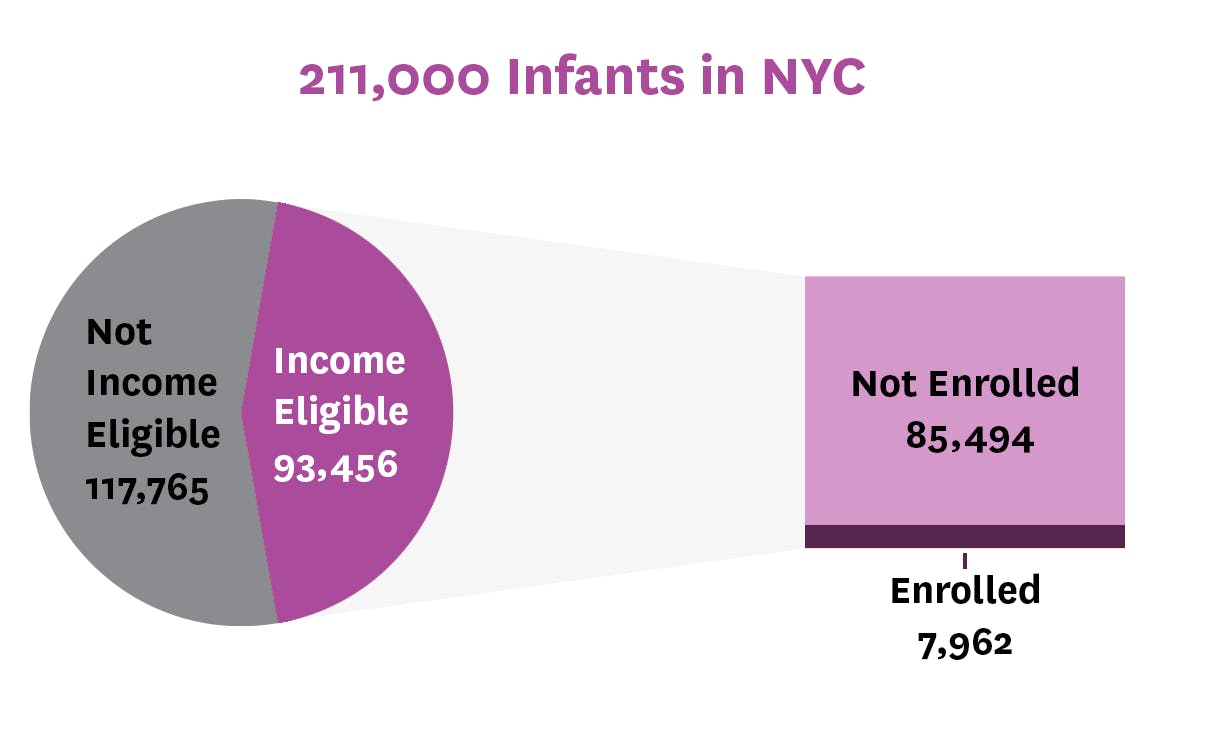

NYC’s Early Childhood Education Delayed Payment Crisis
Insights
November 1, 2022
By: Julie Kronick, Marija Drobnjak, & Robert Guttersohn
Over the last few weeks, advocacy organizations, providers, and allies have drawn attention to a massive crisis facing families across the city: the Department of Education (DOE) has not fulfilled its contractual obligations to reimburse early childhood education (ECE) providers—pre-k and 3-k centers offering publicly funded child care—for the full amounts of their fiscal year 2022 contracts—a payment cycle that ended on June 30, 2022. Now, as we head into the holiday season nearly 6 months later, the city still owes these child care centers and providers collectively over $400 million dollars based on signed contracts. A SeaChange research note from late September explains the backlog in payments and related data—according to the document, for some individual organizations, the deficit is as large as $35 million and 19 organizations show a deficit of $5 million or more. Click here to view SeaChange’s research note on ECE payments.
As a result of these missed and delayed payments, hundreds of community-based organizations have leveraged loans and lines of credit to meet payroll, while others have not only missed payroll but have been forced to close their doors, leaving many families without child care options. As the crisis continues, more providers are determining whether to permanently close centers and stop serving children and families. You can read this New York Time’s article, “Why New York’s Day Care Centers Are Going Broke”, for some insight into the crisis. Steps must be taken to immediately address this problem.
To further raise awareness and demand action, CCC joined City Council members, ECE providers, teachers, parents, and other advocacy organizations on Wednesday, October 19 for a rally on the steps of City Hall to insist DOE pay providers what they owe without further delay and on time. CCC’s Policy & Advocacy Associate Rebecca Charles spoke at the rally, explaining the fact that over $400 million dollars are owed by DOE for reimbursements. Below is clip of Rebecca speaking.
That same afternoon, CCC submitted both oral and written testimony at an Oversight Hearing held by the City Council’s Committee on Education for Early Childhood Programs in New York City. Click here to find the recording of the hearing which contains a lot of compelling testimony and relevant data on the state of NYC’s Early Childhood Education System (see testimony from CCC at the 3:03:42 mark). You can also read the testimony submitted here, which includes recommendations on how to handle this crisis.
This crisis comes at a time when data from earlier in the year exploring expansions to New York’s contracted child care system shows that, though it has grown from 33,000 seats in 2013 to over 92,000 seats in 2020, the system still does not address the full child care needs of families. Before this delayed payment crisis began, more than 75% of children under five lacked access to the publicly funded childcare system, and what’s more, over 90% of infants in families that were eligible for subsidies were not enrolled.


From a financial standpoint, most families also cannot easily access child care. CCC’s data shows that 31% of median income for families with young children would be consumed by the cost of infant/toddler center-based child care. With all of this in mind, the ECE system is facing incredible setbacks and closures when data illustrates an already substantial need for more centers to contract with the city.
Infant/Toddler care is unaffordable for families across income spectrums with the greatest cost-burden shouldered by low income families. The cost of one year of center-based child care for infants and toddlers is $18,746, and one year of home-based care costs $10,296.
93%
of families with young children cannot afford center-based care using a federally recommended threshold that costs be no more than 7% of income.
31%
of median income for families with young children would be consumed by the cost of center-based child care.





